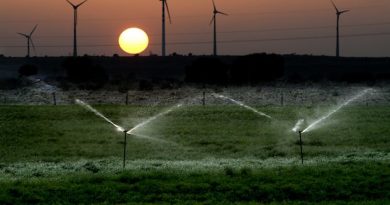Energy Horizons: The Hurdles to Financing Consumer-Led Energy Products

At the Energy Horizons conference held in Delhi, an interactive session on ‘rooftop solar, financing the consumer-led energy transition’ deliberated on business and financing models designed to address the challenge of financing for end consumers in emerging economies.
The speakers were:
Sishir Garemella, Sunvest Capital
Huda Jaffery, SELCO Foundation
Jitender Kumar, Mannapuram Finance
Manoj Rawat, ValueFin India Credit Services
Bhaskar Deol, Mynergy (Moderator)
Abhishek Jain, CEEW (Moderator)
The session began by exploring the biggest problem: consumer finance for the solar industry.
Shishir Garemella of Sunvest Capital said the problem of financing could be addressed by changing or adapting the business model. The idea of EMI in solar rooftop took shape while the panelists deliberated on various products that could be the future and agreed that the ‘consumer’s point of view’ should be kept in mind for financing.
Terms like used ‘distributed renewable energy, ‘new solar products’ and ‘solar bank’ were often mentioned as viable means to finance solar powered items and products ranging from solar sewing machines to electric tractor.
Manoj Rawat of ValueFin mentioned how Non Banking Financial Companies (NBFCs) view renewable energy and solar products and said that rather than NBFCs, major banks are needed to come forward and added that if only 1% of loans from the total lending are dispersed, billions worth of investment will flow into the solar sector. He also said that the biggest challenge is capital creation, the problem is how will solar build discounts in long term investments. He ended by saying that financial products need to address the problem of capital creation and then only can the infusion of cheap loans with better returns help MSMEs.
Talking on the social aspect of financing, Huda Jaffery of SELCO foundation discussed about the dearth of products matching market-based financing. She talked about philanthropic capital entering into revolving funds, risk guarantees or supporting and building of the last mile connectivity by the banks. She spoke about the MUDRA scheme but quickly added that financing today is based on ‘personal relationship’ which has been the spine of the finance generation in various sectors and are not dependent solely on products. She also did add that a lot of technical and efficient products are missing for solar livelihood creation.
The discussion soon took a turn when institutionalisation as a solution cropped up. Jaffery talked about the lessons from risk guarantees at the regional scale to be taken to national-level policy and banking to create a livelihood for all and every segment of the society.
Rawat partially agreed with Huda and added that the bank does complex transactions when it comes to finance but the bankers remain ‘biased’ because of the ‘mindset’ issue with viability. He added that de-risking products can shift the focus from viability to sustainability of the products which is needed now. He said that local participation in the process will ensure that change in mindset
Jitendra Kumar of Mannapuram brought forward the problems faced by financiers. He said adaptability and costs are hampering financing from working. Like in the EV sector, battery costs are too high. He added that despite communication and education, consumer’s response has been lukewarm. He added that he was ready to finance but manufacturing side anomalies in communication and providing data has been stopping the flow of funds. To this, Rawat added that bankers only finance in which returns are assured since banks are risk-averse.
All the panelists agreed that low-cost fund and other types of products are needed for rural livelihood creation. OPEX+CAPEX model of financing is needed, as Huda pointed out, and said that there is a fundamental difference between two products like solar-powered sewing machine and a regular sewing machine, which also means that finance needs to calculate the total expense which has been a contributing factor why bankers are wary to finance solar-based products.




